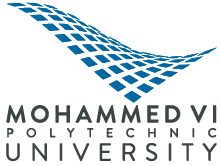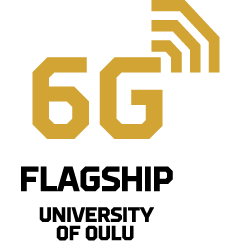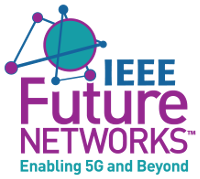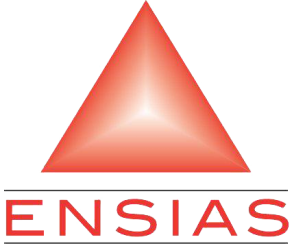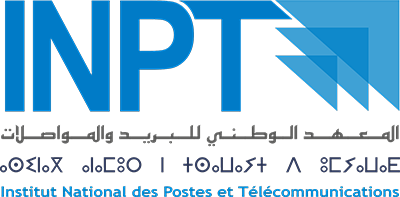PANEL#1 - 5G TEST-BEDS FOR DEPLOYMENT OF 5G NETWORKS & INNOVATIVE USE CASES.
PANEL#2 - 5G for Businesses - How to Turn 5G Technologies into New Business Opportunities
PANEL#3 - REALIZING THE WIRELESS FUTURE FOR ALL
PANEL#4 - DRONE NETWORKING: TECHNICAL CHALLENGES AND BUSINESS OPPORTUNITIES
PANEL#5 - Maturing E2E network and cloud slicing: Where are the frontiers?
PANEL#6 - PAVING THE WAY TOWARDS 6G
PANEL#7 - 5G ENABLED SMART INDUSTRIES
PANEL#8 - Toward Millimeter-wave V2X for Automated Driving in 5G and Beyond
Panel#1 - 5G Test-beds for Deployment of 5G Networks & Innovative Use Cases.
Abstract
The 5th generation mobile network standard is regarded as an ICT eco-system that will support the digital transformation of societies impacting industry and societal economy in both developed and emerging economy countries. The proposed panel will discuss 5G network test-beds to facilitate effective 5G network deployments, setting up the technical regulatory framework and testing of use cases with relevant context. The panel discussions will be based on case studies emanating from two representative countries: South Korea and South Africa.
The 5G wireless ICT-eco system standards are composed of three distinct pillars that aim to address; (a) enhanced mobile broadband enabling gigabit ICT services such as video-on-demand, (b) Low network latency enabling critical infrastructure and control services for industrial applications; (c) Energy efficiency and network coverage to enable the 50 billion sensing devices, machine-2-machine (M2M) communications and Internet of Things devices and services. The three pillars of the 5G ICT eco-system are expected to have a more significant impact in the high economic urban areas throughout the world. However, the panel will also argue that synergetic opportunities exist to transform emerging markets’ ICT infrastructure through 5G based innovations in network technology, energy efficiency, spectrum and radio resource sharing, techno-policy and regulatory frameworks. 5G network test-beds play a crucial role in all aspects of the aforementioned areas and are expected to enable accelerated deployment of 5G technologies and associated services improving existing ICT infrastructures globally. In order to achieve inclusive digital transformation and industrialization using emerging 5G technologies the outcome of the case studies from two countries will be used.
5G Test-beds play an important role in the smart industries and economies of countries, as a tool to follow the progress in the emerging network technology trends in 5G, and testing of relevant 5G techniques such as end-to-end network slicing and testing of use cases. The 5G test-bed under development at CSIR in South Africa is a case in point, including the 5G network test trials being undertaken by mobile operators. This is designed to accelerate support further research and testing of 5G network equipment, and development of innovative mobile applications and services. Network slicing for low cost data networks, Softwarization of network functions for affordable broadband, 5G NR with the non-standalone (NSA) standard testing including C-RAN, with advanced spectrum sharing and regulatory implications will be discussed.
Panelists from industry, academia, regulatory and policy making organizations will discuss issues pertaining to 5G Test-beds, research in synergetic and disruptive technologies for 5G, co-existence of heterogeneous networks, innovative regulatory frameworks, business models for vertical industries and policies that will enhance the benefit from the upcoming 5G wireless networks and ICT eco-system standards will be discussed and a white paper will be developed as an outcome from the panel.
Panel Discussion Points::
- The Role of 5G Test-beds in Industrialized and developing countries. How can we change the perception of current 5G standards as supporting only use cases for urban/affluent centers and promote affordable broadband for emerging markets in a controlled environment?
- Can 5G Test-beds be used to support operators testing of operational issues such as Dev-ops, automation and SoNs capabilities, service flexibility, and reduce time to deployment?
- Can 5G test-beds be used to develop the research evidence and background for developing new technical regulations and enabling policy framework for accelerating 5G deployment and smart service innovations?
- How important is the role and use of 5G network test-beds, in public awareness creation, expert human capacity development to maintain & operate advanced networks.
- Can we use 5G test-beds to enhance R&D and creation of innovative mobile services for the masses such as the MPESA of 5G, and improve digital inclusion of underserved communities?
- 5G is regarded as a crucial enabling technology to realize the 4th Industrial Revolution and provide the tools to address the UN SDGs… Please give your input on how 5G test-beds can be used to realize this.
- What is the role of 5G Test-beds in research and development for the 5G+ innovations?
Panel Session Format:
- Introduction by chair: 20 Min.
- Panelists Introductory Speech: 25 Min.
- Panel Discussion: 50 Minutes
- Concluding Remarks: 10 Min
Panelist bios
Organizers
Dr Fisseha Mekuria, Chief Research Scientist, CSIR Meraka ICT Institute, South Africa.
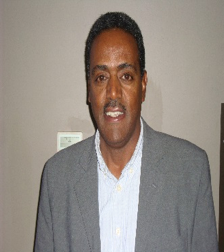
He leads the 5G and Affordable Broadband Networks research at the CSIR. He is the proponent of a 4th leg for the 5G standards aimed at technologies for addressing the next billion unconnected population and promoting digital inclusion. He has a PhD from Linköping University, in Sweden, and has worked for 10 years as senior research Engineer at Ericsson Mobile Communications R&D lab in Sweden, where he developed over 12 US/EPO patents. He has published over 60 peer reviewed publications, worked with mobile and internet service industry: Setting up next generation network labs, Development of mobile applications programming courses, Network resource sharing for affordable broadband connectivity, and development of telecom regulatory frameworks and capacity building for telecom regulators in Africa. He is at present working on disruptive 5G research in dynamic spectrum sharing and extending 5G to accommodate affordable broadband network technologies and setting up 5G test-beds for testing relevant use cases and accelerate a smooth migration to 5G. The group lead by him has successfully completed the international qualification process and standardization of white space spectrum databases in collaboration with the UK Ofcom regulator and is working on developing smart spectrum toolboxes for 5G use cases. He is a member of advisory board for a number of EU FP7 projects and is a Judge for the GSMA global mobile awards in support of Green technologies for future wireless networks. Dr Mekuria is also involved in postgraduate research development in wireless communications with a number of African universities through his engagement as Adj. Professor at the University of Johannesburg, Faculty of Electrical and Electronics Engineering Science, South Africa.
Prof. Young. N. Han, Director 5G Wise, KAIST, Republic of South Korea

Prof Y. Han is Director 5G wise Lab, at the Korea Advanced Institute for Science & Technology (KAIST) republic of Korea. He is the principal investigator for the 5G Testbed Initiative sponsored by the Korean Government. He was also involved as past member as the steering committee Chair of the 5G Forum, Korea. He is an active member of the IEEE future wireless networks, COMSOC and was general Chair, IEEE VTC Spring 2014, Seoul, Korea. He has been the technical program committee-TPC Chair, IEEE VTC 2002, Jeju, Korea.
Panelists
Prof. Lee Hyeongwoo, 5G-Forum, Korea.
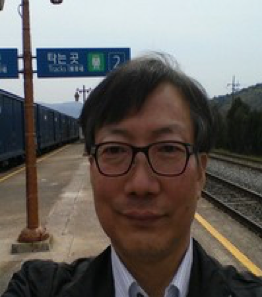
Dr. LEE. Hyeon Woo is currently a Professor at Dankook University in Korea and serving as a chair of 5G forum global strategy committee as well as TTA 5G. Standard group chair. He worked as a National R&D Program Director of KEIT (Korean Evaluation Institute of Industrial Technology) under Ministry of Knowledge Economy of Korea from March 2009 to Feb. 2013. He had been work as Director and Head of Global Standard & Research Lab. in Telecom R&D Center of Samsung Electronics Co. in Korea from Dec. 1984 until Feb. 2009 He received BSEE from Seoul National University, 1985 and MBA from Sogang University, 1989, in Korea. He got MS and Ph. D degree at KAIST, Korea in 1994 and 2003 respectively. Since 1996, he devoted himself to national and international standardization work such as ETSI, ARIB, TTA, 3GPP , 3GPP2 and ITU.
Jin Bains, Head of Connectivity Lab, Facebook.
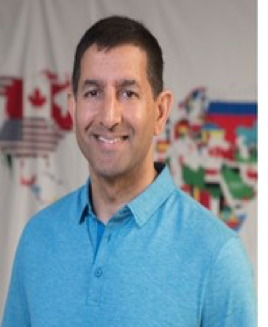
Jin the Head of the Connectivity Lab, Space & Cellular Team, Jin oversees and directs key aspects of Facebook’s efforts to increase access to affordable connectivity across the globe, including the use of terrestrial, low-altitude, and satellite systems. Jin holds a BS and MS in Electrical Engineering from UC Davis and Stanford, respectively. Before joining Facebook, Jin spent over ten years at National Instruments, where he served as the Vice President of R&D, RF and Wireless Products, managing a global R&D organization of engineers and driving innovation with internal experts and key outside partners. Jin began his career as an RF Engineer and R&D manager for Hewlett Packard and Agilent Technologies.
Dr. Mrs. Maria Barros Weiss, Programme Manager at Eurescom
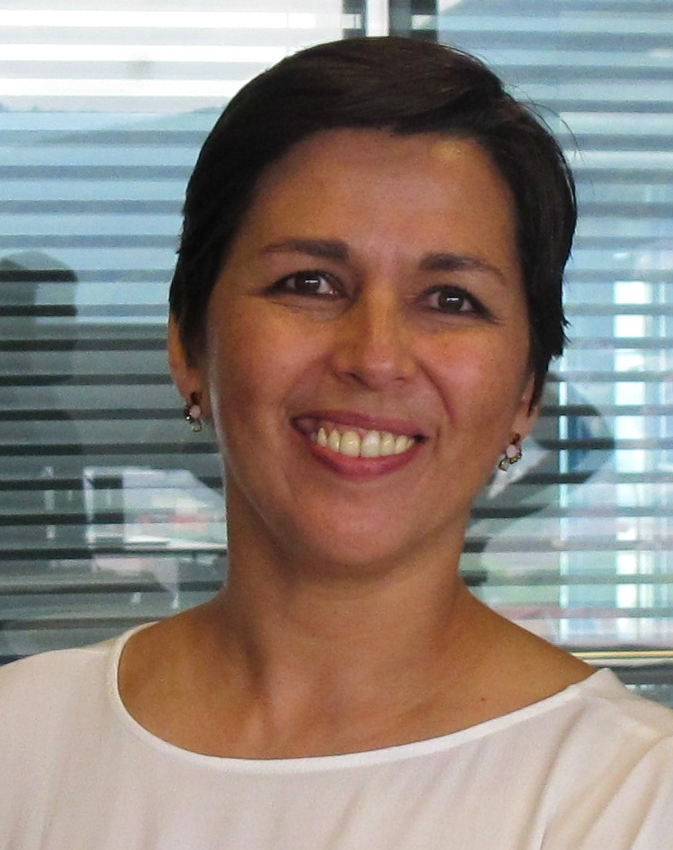
Dr. Mrs. Maria Barros Weiss, Programme Manager at Eurescom, is project Cooordinator of the 5G PPP project SLICENET - End-to-End Cognitive Network Slicing and Slice Management Framework in Virtualised Multi-Domain, Multi-Tenant 5G Networks (https://slicenet.eu). With expertise in communication networks, she has been involved in different ICT areas, like 5G, Smart cities, Future Internet (FI), and Artificial Inteligence (AI); focusing on topics like Network Management, Network Slicing, Machine-learning, Human-Machine interfaces, and Language Technologies. She has a Ph.D. in Communication and Language technology from the University of Bonn, Germany; a M.Sc. degree in Computers and Electrical Engineering from the University of Porto, Portugal; and a B.Sc. degree in Computers and Systems Engineering from the University of Algarve, Portugal. She was Lecturer in Engineering at the Lisbon College of Engineering (ISEL) before she joined Eurescom in 2008.
Dr Joachim Sachs, Ericsson Research
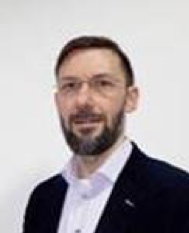
Dr. Joachim Sachs is a Principal Researcher at Ericsson Research. He has studied electrical and electronics engineering at the RWTH Aachen University, Germany, the ENSEEIHT, France, the Norwegian University of Science and Technology (NTNU), Norway, and the University of Strathclyde, Scotland. He received a diploma from RWTH Aachen University in 1997 and a doctorate degree from the Technical University of Berlin in 2009 respectively. He joined Ericsson in 1997, where he has contributed to the development of 3G, 4G and 5G standards. He was a visiting scholar at Stanford University in 2009. His current research interests are cellular communication for Industrial IoT systems and cross-industry research collaborations. Since 1995, Joachim has been active in the IEEE and the German VDE Information Technology Society (ITG), where he currently co-chairs the technical committee on communication networks and systems.
Justin Wang, Senior Researcher, Huawei Wireless Technology lab, China
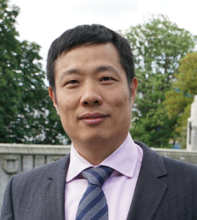
Justin Wang is senior researcher of Huawei Wireless Technology Lab. He joined Huawei Technologies in 1999 and participated in the entire 5G research progress of Huawei, including early scenario exploration, physical layer research, field trial and standards. In the 5G research process, he was responsible for the field trial of eMBB, uRLLC, which achieves 50G bps system capacity, 8G bps single user capacity and 1ms latency, these 5G key performance indicators could support more application. As one of the world's first 5G testbed’s founders, he is very familiar with the ins and outs of 5G technology and related applications. And in the subsequent 3GPP R15, he was successful to contribute the relevant physical layer technology into the standard. He is currently working on 5G+ research and is interested in technologies related future wireless.
Panel#2 - 5G for Businesses - How to Turn 5G Technologies into New Business Opportunities?
Abstract
New 5th generation (5G) wireless network technologies are foreseen to transform industries and ecosystems through wireless services provided at gigabit speeds, milli-second latency, and by supporting wide range of novel applications connecting devices and objects. This transformation will create versatility by virtualization and enables innovative business models across multiple sectors.
However, Research regarding 5G related business models is still at its early stages. A practical challenge in 5G business transformation is to discover how the different change drivers in technology and use cases interact, are related to each other, and how the future of 5G business models unfold, as paced based on identified drivers. The biggest change in 5G mobile market is the potential emergence of a large number local 5G operators for serving vertical specific requirements to complement the existing MNOs.
This panel would give an overview of the 5G business opportunities and frames from different stakeholder perspectives, and seeks to answer the following questions: How could the evolution of 5G business models unfold? What will be the first businesses and how will the business ecosystems change? What could be the framing elements in technology, business and policy?
Panelist bios
Organizers
Dr. Seppo Yrjölä, Principal innovator, Nokia, Finland.
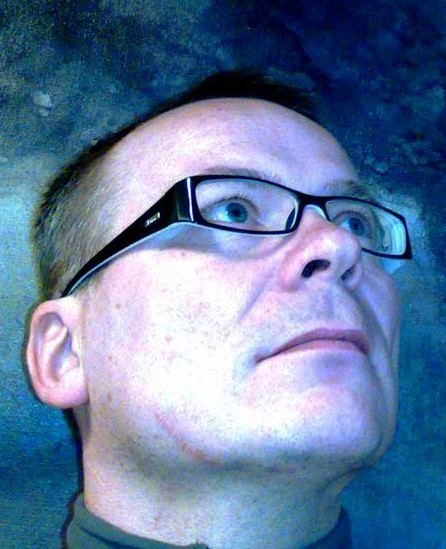
Seppo Yrjölä is a Principal Engineer at Nokia Enterprise, in Finland. He holds a Dr.Sc. (Tech.) degree in Telecommunications Engineering from University of Oulu. Seppo's been with Nokia for 30 years. Previously as head of wireless technology for the Networks division at Nokia, his role required him to look beyond the product roadmap and identify what new trends, technologies and tools were on the horizon, and determine and validate how those future opportunities fit into the Nokia pipeline. His current research is focused in the areas of digital automation and future radios with cognitive network business opportunities and potential disruptions as an important aspect to scout. He incubates and steers opportunities externally with customers, partners and governments with the purpose of driving growth by innovating holistically from technology to business models. Special topic recently is to explore and understand how and why platform-based ecosystemic business models can emerge in the future wireless systems context.
MODERATOR
Dr. Petri Ahokangas, Senior research fellow, University of Oulu, Oulu Business School, Martti Ahtisaari Institute, Finland.
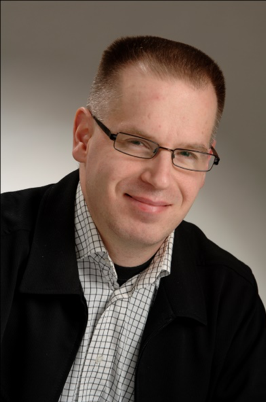
Petri Ahokangas received his Doctor of Science (Business Administration) in 1998 from University of Vaasa, Finland. Currently he is Senior research fellow and leader of FUTURALIS research group at Martti Ahtisaari Institute of Oulu Business School at the University of Oulu, Finland. FUTURALIS focuses on future digital business models and ecosystems. He is also adjunct professor of international software entrepreneurship at the University of Oulu. His research interests are in how innovation and technological change influence international business creation, transformation, and strategies in highly technology-intensive or software-intensive business domains. He is co-editor-in chief of Journal or Business Models, and he has over 150 publications in scientific journals, books, conference proceedings, and other reports. He is actively working in several ICT-focused research consortia leading the business research activities. Prior to his academic career, he worked in the telecommunications software industry. He is a serial entrepreneur and active consultant in the field on digitalization, strategy and internationalization..
Panelists
Ms. Elizabeth Migwalla, Senior Director and Head of Government Affairs, Middle East & Africa, Qualcomm International Incorporated

Elizabeth Migawalla. A career spanning more than 31 years engaging in all aspects of telecommunications engineering, operations, services as well as ICT policy, regulation and public affairs. This includes 20 years spent in African regional ICT policy and regulatory practice, interfacing directly with key government ministries, regulatory authorities, regional and international organizations involved in ICT development, and industry participants. A track record of formulation and execution of regional strategies aimed at creating enabling policy environments for ICT innovations and service in Africa, covering global mobile satellite services, aeronautical mobile satellite services and mobile broadband services. Recognized as one of Africa's leading experts on ICT policy, with an extensive network of government and industry stakeholders. A thought leader and regular speaker in strategic global and regional ICT forums
Mr. Tim Miller, Partner, Plum Consulting
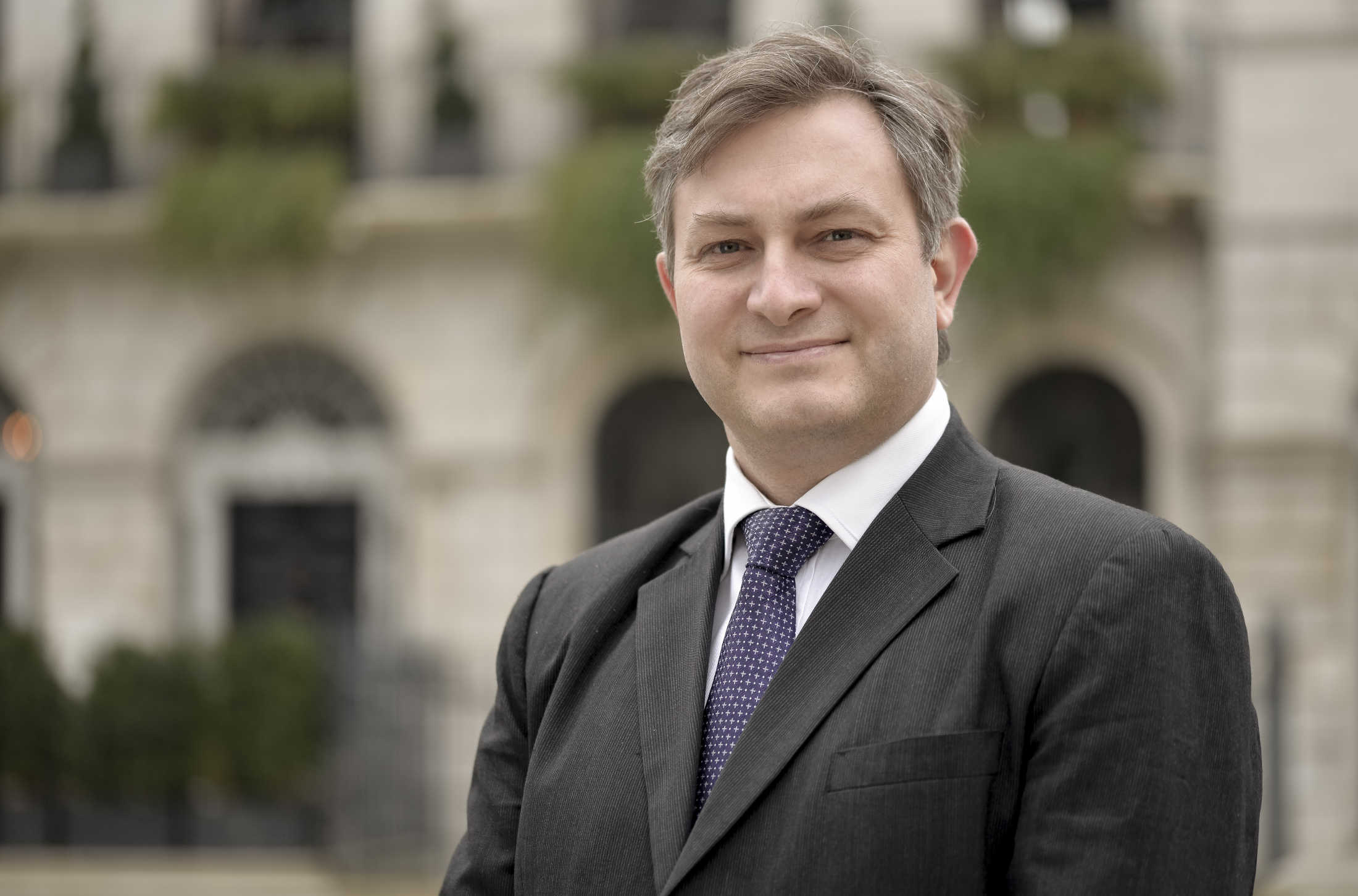
Tim Miller is a Partner at Plum and specialises in the application of economic theory to telecommunications issues, with a particular focus on regulation, competition, and spectrum policy and strategy. His advice has been used by operators to lobby for changes to regulation, and by operators to form regulatory policy and strategy.Tim has developed models and analytical tools for operators, regulators and governments around the world to assess the value of spectrum and how it should be awarded. He has also provided advice on how spectrum may be used from both a technical and regulatory perspective in mobile and fixed networks. His work considers the analysis of markets and company interactions, both in terms of their impact on spectrum awards and on regulation in general. He is adept at applying established regulations to emerging markets, particularly those in Africa, Latin America and the Middle East, but is keen to develop new regulatory thinking to reflect the changing nature of today’s telecommunications markets, applied to markets worldwide.
Mr. Fabian S. Schlage, Head of Ecosystem Engagement, Nokia
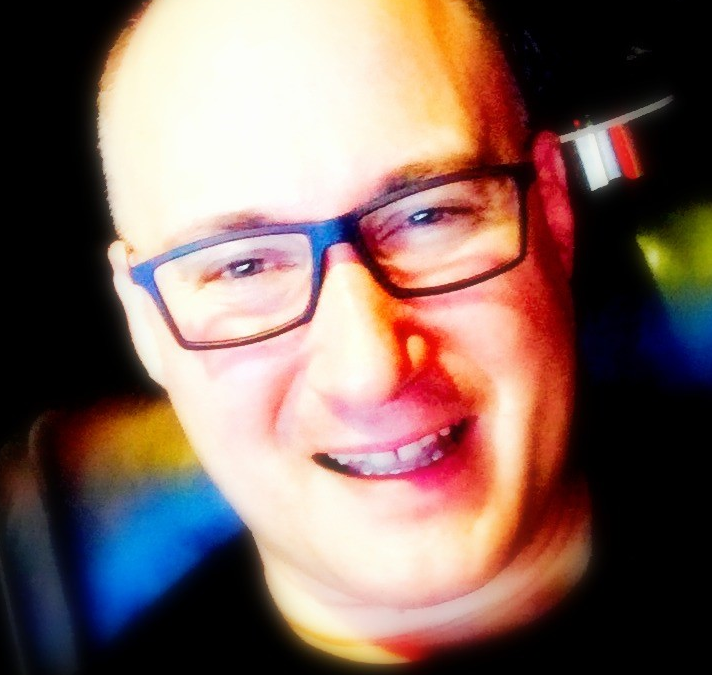
Fabian S. Schlage was born 1970 in Munich, computer scientist at Technical University Munich, since 1994 within Telecommunication Industry, Consultancy, Enterprise Business and Innovation Coaching. Head of Ecosystem Engagement within Nokia Enterprise Digital Automation unit, to create value for our Nokia customers with digital applications. Member of Industrial Internet Consortium (IIC), the 5G Alliance for Connected Industries and Automation (5G-ACIA) and Multefire Industry working group. Responsible for the manufacturing segment and other industry verticals such as logistics and warehousing in Nokia regarding the 3GPP ecosystem 4G / 5G, licensed and non-licensed industry grade applications. Former functions: Head of Innovation Portfolio, Nokia Innovation Incubator, Head of Idea to Innovation Enabling, Head of Innovation and Idea Management at Nokia. Lecturer for Innovation Management at THI Ingolstadt (Germany) and NW university (Switzerland). Scientific Panel Member at ISPIM. Background: Personal Business Consultant to Chief Executive Board within Siemens AG. Heading functions within Business Transformation. Established Innovation Process within Nokia Networks. Research on applied Innovation Management within international Innovation Management Networks. International Consultancy / Speeches / Awards e.g. at CoDEV, Marcus Evans, Management Circle, World Innovation Convention, ASUP, EURAM, ISPIM, Fraunhofer Society YouTube-Video Blog: www.youtube.com/fabsinnovationtv Facebook: www.facebook.com/fabianschlage
Panel#3 - Realizing the Wireless Future for All.
Abstract
Wireless communication and its role in the facilitation of Internet access has helped realize vast economic and social benefits. However, there is often a stark contrast between what it has achieved in developed countries and the situation in developing countries. This contrast manifests also in the comparison of wireless system performances in urban and rural areas. It is a schism that finds its roots in a lack of affordable provisioning and access to communication and data networks under the current reigning economic, regulatory and technological regimes. It perpetuates the digital divide, leading to a lack of realization of true digital inclusion and the associated benefits that typically follow. Moreover, solutions that contribute to the capabilities of leading-edge communication systems such as 5G might exacerbate the rich/poor and urban/rural divides. The vast range of new applications, markets and social/economic impacts of 5G will therefore be missed in many developing and/or rural areas.
This panel investigates the opportunities, problems, and challenges towards making a difference through future wireless communication technologies, proposing solutions to help bridge the digital divide and achieve inclusive digital transformation of underserved communities. It is also in line with the UN's sustainable development goals. The outcome of this panel is expected to be a proposal of specific solutions, including those around spectrum sharing to enhance lower-frequency spectrum availability (hence, enhancing coverage and the number of people provisioned for), and technical regulatory and economic policy deployment facilitation.
Panel Questions & Discussion Topics:
This panel provokes discussion guided by a few typical cases (hypothetical or real scenarios where Internet access is insufficient or absent) and by phrasing a number of questions which the panelists are asked to comment on. These questions include, for example,
- What prevents or hinders broadband deployment in developing countries?
- What are the current thoughts on 5G wireless technologies in developing countries with respect to factors like the costs of devices, costs of data plans and/or simply the inability of the users to adapt to new device interfaces?
- Is the arrival of 5G good news for efforts to bridge the digital divide?
- Can spectrum sharing techniques enhance wireless broadband access in developing and remote rural areas? How will spectrum sharing be implemented in such scenarios?
- Can spectrum sharing enhance the prospects of 5G in rural areas and developing countries?
- Are initiatives currently being undertaken to lower the costs of 5G networks? What are the roles of Wi-Fi, TVWS, long-range 5G and other technologies in this context?
- Which innovative technologies and business models might be suited to the commercialization of 5G in developing countries?
- Should 5G technologies be offered free of cost or be subsidized to encourage adoption and build the subscription base of the digitally disadvantaged or those that can’t afford it?
Panel Session Format:
- Introduction by the Panel Chair: 10 Min.
- Short Introductory Speech by Panelists: 20 Min.
- Panel Questions and Answer Session : 50 Min.
- Concluding remarks : 10 Min.
Panelist bios
Organizers
Dr Oliver Holland, Advanced Wireless Technology Group, UK
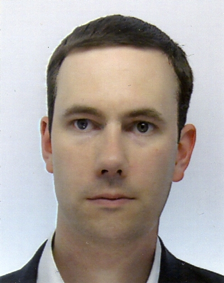
Dr. Oliver Holland is an expert on spectrum sharing, spectrum in general, and 5G and future mobile communication technologies, among other topics. Among his extensive range of leadership activities, he has led major research projects on spectrum sharing and other topics, has led a major trial within the UK’s Ofcom TV White Spaces Pilot, and most recently created and led a team/submission/idea which won the €0.5M EU Collaborative Spectrum Sharing Prize. Oliver is Chair of the IEEE 1918.1 Standards Working Group on the Tactile Internet, and Chair of the IEEE Standards Committee on Mobile Communication Networks (MobiNet-SC)—both of which he spearheaded the establishment of. He is also Chair of the IEEE Dynamic Spectrum Access Networks Standards Committee (DySPAN-SC), Chair of IEEE 1900.6, Vice-Chair of IEEE 802.22 and IEEE 802.22.3, and Vice-Chair and Board Member of the IEEE ComSoc Standards Development Board, among other standards leaderships. He has served as Technical Editor and authored content in various standards. Oliver has served on the TPCs of all major conferences in mobile and wireless communications, and has served as invited speaker, session chair and panelist at numerous high profile conferences. Oliver has assumed leadership positions in various top international workshops, conferences, and journals, at levels including TPC Chair/Co-Chair, Track Chair, Workshops/Tutorials Chair, Organizational Chair, and Invited/Guest Editor, among others. He is an Editor of IEEE Transactions on Vehicular Technology. Oliver serves as Vice-Chair of IEEE Technical Committee on Cognitive Networks, and is currently Chair of the UK and Ireland Chapter of the IEEE Vehicular Technology Society (VTS), as well as Chapters Committee Chair of the VTS—thereby also being a VTS Board Member. Oliver is a Non-Executive Director of Broadway Partners, which is a company providing broadband in difficult-to-reach areas using shared spectrum. He also runs his own wireless communications consultancy company. Oliver has authored/co-authored over 150 publications, cited more than 1,800 times, and has authored/co-edited two books published by Wiley and Springer.
Dr Sudhir Dixit, Basic Internet Foundation & Oulu University, USA
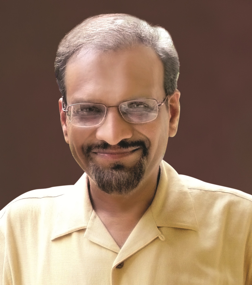
Prof. Sudhir Dixit is a Senior Fellow and Evangelist of Basic Internet at the Basic Internet Foundation and heads its US operations. He is also a Board Member & Working Group Chair at the Wireless World Research Forum (WWRF). From 2015 to 2017 he was the CEO and Co-Founder of a start-up, Skydoot, Inc, in the cloud-based and collaboration space. From December 2013 to April 2015, he was a Distinguished Chief Technologist and CTO of the Communications and Media Services for the Americas Region of Hewlett-Packard Enterprise Services in Palo Alto, CA, and prior to this he was the Director of Hewlett-Packard Labs India from September 2009. From June 2009 to August 2009, he was a Director at HP Labs in Palo Alto. Before joining HP, he held various leadership positions at BlackBerry, Nokia, NSN and Verizon Communications. Sudhir Dixit has 21 patents granted by the US PTO and has published over 200 papers and edited, co-edited, or authored eight books by Wiley, Springer and Artech House. He has been a technical editor of IEEE Communications Magazine, and is presently on the editorial boards of IEEE Spectrum Magazine, Cambridge University Press Wireless Series and Springer’s Wireless Personal Communications Journal. From 2010 to 2012, he was an Adjunct Professor of Computer Science at the University of California, Davis, and, since 2010, he has been a Docent of Broadband Mobile Communications for Emerging Economies at the University of Oulu, Finland. A Life Fellow of the IEEE, Fellow of IET and IETE, Dixit holds a Ph.D. from the University of Strathclyde, Glasgow, U.K. and an M.B.A. from the Florida Institute of Technology, Melbourne, Florida.
Prof Jaap van de Beek, Luleå University of Technology, Sweden
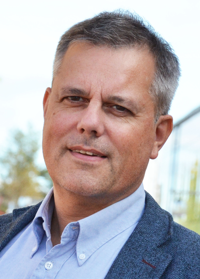
Prof Jaap van de Beek, is chaired professor of Signal Processing with Lulea University of Technology, Sweden, and a Fellow of the IEEE. Prior to returning to academia in 2013, he spent over two decades in industrial telecommunications research labs with Telia Research, Nokia Networks, and for more than twelve years with Huawei Technologies. In different roles he has been involved in three generations of mobile cellular communications systems. He developed base station receiver algorithms for GSM evolution systems. He was among those pioneering OFDM as an access scheme for cellular radio in a standard proposal for the third generation systems in 1997, and during 2004-2009 he has been contributing to the preparation and specification of 3GPP's fourth generation LTE standard, for which he holds a number of essential patents. More recently, he has been developing methods that efficiently reduce spectral interference of radio transmitters, work for which he received the IEEE Communications Society Heinrich Hertz award. Since 2012, Prof. van de Beek mainly engages in improving Internet access, wireless network connectivity and cellular radio coverage in rural and remote regions.
Prof Antoine Bagula, University of the Western Cape, South Africa
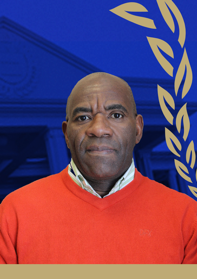
Prof B. Antoine Bagula, received a Ph.D degree in Communication Systems from the Royal Institute of Technology (KTH), Stockholm, Sweden, and two M.Sc. degrees (Computer Engineering from Universit\'{e} Catholique de Louvain (UCL), Belgium and Computer Science from University of Stellenbosch (SUN), South Africa). He is currently a full professor and head of the Department of Computer Science at the University of the Western Cape (UWC) where he also leads the Intelligent Systems and Advanced Telecommunication (ISAT) laboratory. He is a well-published scientist in his research field which include interests in Cloud/Fog computing; Network Softwarization (e.g. NFV and SDN), Internet of Things, Blockchain Technologies, Network Security; and Next Generation Networks including 4G/5G.
Dr Luzango Mfupe, CSIR Future Wireless, Pretoria.
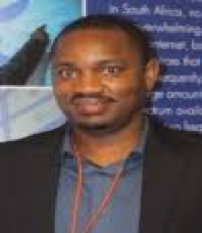
Dr. Luzango Mfupe is a Principal Researcher and innovator at the Council for Scientific and Industrial Research (CSIR) Meraka Institute in Pretoria, South Africa. He holds a Doctorate in Telecommunications. His main research areas include but are not limited to: futuristic fixed and mobile wireless network technologies, innovative flexible radio frequency (RF) spectrum management policy schemes to accommodate new innovative radio technologies such as machine learning and dynamic spectrum access techniques. Dr Mfupe is a senior member of IEEE and Vice-chairman of IEEE DySPAN-SC 1900.6 standardisation Work Group. Luzango is a technical leader of the CSIR Geo-location spectrum database (GLSD) project.
Dr Fisseha Mekuria, CSIR Chief Scientist.

He leads the 5G and Affordable Broadband Networks research at the CSIR. He is the proponent of a 4th leg for the 5G standards aimed at technologies for addressing the next billion unconnected population and promoting digital inclusion. He has a PhD from Linköping University, in Sweden, and has worked for 10 years as senior research Engineer at Ericsson Mobile Communications R&D lab in Sweden, where he developed over 12 US/EPO patents. He has published over 60 peer reviewed publications, worked with mobile and internet service industry: Setting up next generation network labs, Development of mobile applications programming courses, Network resource sharing for affordable broadband connectivity, and development of telecom regulatory frameworks and capacity building for telecom regulators in Africa. He is at present working on disruptive 5G research in dynamic spectrum sharing and extending 5G to accommodate affordable broadband network technologies and setting up 5G test-beds for testing relevant use cases and accelerate a smooth migration to 5G. The group lead by him has successfully completed the international qualification process and standardization of white space spectrum databases in collaboration with the UK Ofcom regulator and is working on developing smart spectrum toolboxes for 5G use cases. He is a member of advisory board for a number of EU FP7 projects and is a Judge for the GSMA global mobile awards in support of Green technologies for future wireless networks. Dr Mekuria is also involved in postgraduate research development in wireless communications with a number of African universities through his engagement as Adj. Professor at the University of Johannesburg, Faculty of Electrical and Electronics Engineering Science, South Africa.
Distinguished Panelists
Sid Roberts, Microsoft Airband, USA.
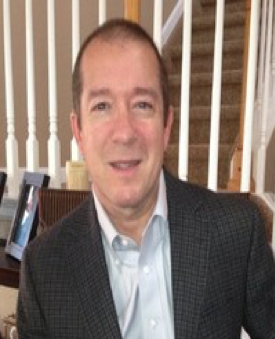
Sid is the director of engineering on Microsoft’s Airband Initiative team, based in Redmond, Washington, where he has technical responsibility for global connectivity projects. Hired into Microsoft’s Technology Policy Group five and a half years ago to help move TV white space radio solutions from the lab to wide scale deployment, Sid has over 35 years of telecommunications experience, with 20 of those years directly in the wireless operator segment. Before joining Microsoft, Sid designed and deployed low latency microwave networks for High Frequency Traders, and prior to that he was Vice President of Systems Engineering at Open Range Communications, a WiMAX operator serving rural America. He also spent three years as director of engineering at a startup company called Sotto Wireless which was an MVNO that designed and deployed a VoIP over WiFi solution for consumers and SMBs. A large portion of Sid’s experience comes from nearly 15 years with McCaw/AT&T/AT&T Wireless, where he was Director of Radio Access Network Engineering and spent seven years with the International division. During this tenure, he supported business development activities and managed design and deployment of GSM networks all around the world. In this role and others, Sid focused on the strategic aspects of the business, responding to RFPs, negotiating supplier contracts, and managing third parties to accomplish large wireless network design and implementation projects. Before coming to AT&T Wireless, Sid spent eight years in the defense industry with Rockwell International and Martin Marietta (now Lockheed Martin), designing and modeling high frequency radio systems and satellite based communications networks. Sid has a B.S. in Electrical Engineering from Virginia Polytechnic Institute and a M.S. in Telecommunications Policy from The University of Denver.
Dr Luzango Mfupe, CSIR Future Wireless, Pretoria.

Dr. Luzango Mfupe is a Principal Researcher and innovator at the Council for Scientific and Industrial Research (CSIR) Meraka Institute in Pretoria, South Africa. He holds a Doctorate in Telecommunications. His main research areas include but are not limited to: futuristic fixed and mobile wireless network technologies, innovative flexible radio frequency (RF) spectrum management policy schemes to accommodate new innovative radio technologies such as machine learning and dynamic spectrum access techniques. Dr Mfupe is a senior member of IEEE and Vice-chairman of IEEE DySPAN-SC 1900.6 standardisation Work Group. Luzango is a technical leader of the CSIR Geo-location spectrum database (GLSD) project.
Pranav Jha, Frugal 5G, IIT, Bombay, India
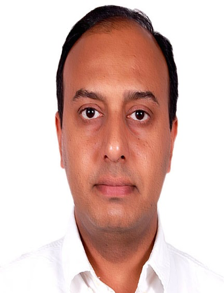
Pranav Jha works with IIT Bombay, Mumbai, India as a Senior Consultant where he focusses on research programmes under the broad umbrella of wireless communication and networking, with emphasis on Rural Broadband Communication, Public Safety Communication Networks and SDN based architectures for Wireless Communication Networks. Pranav has multiple patents issued and pending, contribution to IEEE and 3GPP standards and papers in international conferences in these areas. Pranav Jha has 20+ years of research and development experience in communication and networking technologies with expertise in system architecture and design, network architectures, communication protocols and resource management algorithms. He is an active participant in the development of technical standards in the areas of fifth generation wireless communication networks and Software Defined Networking (SDN) and currently chairs two IEEE working groups “SDN based Middleware for Control and Management of Networks, IEEE P1930.1” and “Frugal 5G Networks, IEEE P2061”. The working group “Frugal 5G Networks” has been established to develop an “Architecture for Low Mobility Energy Efficient Network for Affordable Broadband Access”. Pranav has delivered invited talks, workshops and tutorials on wireless communication networks, communication network architecture, resource management schemes in wireless networks and Software Defined Networking in various conferences and workshops.
Martin Danneberg, 5G Lab, TU-Dresden, Germany.
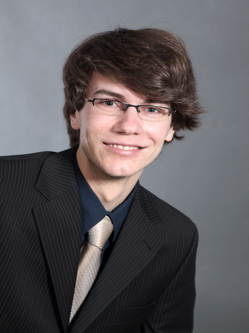
Martin Danneberg received his master degree in electrical engineering from the Technische Universität Dresden in April 2013. During his studies, he focused on wireless communications and circuit design. Since September 2013, he is a member of the Vodafone Chair and leading the research activities of the chair in the EU projects CREW, eWINE and ORCA. His professional interests revolve around non-orthogonal waveforms for future communication systems and especially about FPGA-based physical layer implementations. Further, his focus is to set-up a flexible yet real-time test infrastructure that is capable of hosting the complete 5G network stack from the application layer down to the air interface.
Michael Armitage, Broadway Partners, UK
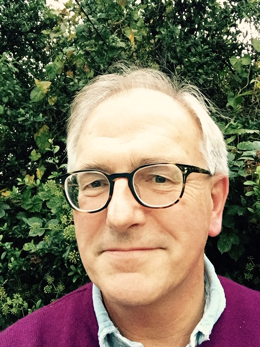
Michael Armitage, Broadway Partners, UK. Mr. Michael Robert Armitage is the founder and Chief Executive Officer of Broadway Partners Ltd. Mr. Armitage has worked in the telecoms industry since joining BT as a graduate trainee in 1980. He was for many years a Managing Director and Research Analyst at Morgan Stanley, leading the research into many of Europe’s telco privatisations and IPOs during the 1990s, and also heading the Global Telecoms Research Team. Since leaving the City in 2011, Mr. Armitage has been developing the technical, business and investment model to support broadband deployment in rural areas, leading Broadway to a leading poosition in the UK market. He holds an Honours degree in English from Reading University and an M.Sc. (Sloan) from the London Business School.
Panel#4 - DRONE NETWORKING: TECHNICAL CHALLENGES AND BUSINESS OPPORTUNITIES.
Abstract
The widespread of Unmanned Aerial Vehicles (UAVs), commonly known as drones, over the past few years has generated an ample range of commercial applications. This spans over numerous areas such as surveillance, monitoring in industry and agriculture, disaster relief, and delivery of goods. In this sense, reliable connectivity, whether among UAVs themselves or with ground stations, is crucial for data management and control.
As the WLAN (Wireless Local Area Network) standard IEEE 802.11 is available in most commercial drones, it is generally used in air-to-air links. For air-to-ground links, and given UAVs mobility, high speed and adaptive altitude, WLAN seems not to meet stringent service requirements in demanding applications. Cellular networks could potentially provide a good alternative. The issue is that they are not designed for flying devices: various problems including but not limited to cell association, handover management, and interference mitigation need to be solved to make such connection possible. Indeed, antennas at base stations (BSs) are down-tilted to reduce inter-cell interference for ground UEs (User Ends), while more favorable propagation conditions in air-to-Ground links (high Line-of-Sight probability) induce high levels of uplink interference generated by UAVs to ground UEs in neighboring cells whilst the UAVs itself suffers downlink interference from neighboring BSs.
This panel would shed lights on how connecting UAVs is dissimilar to connecting regular ground devices in order to capture the built-in technical challenges that drone-connected networks research has to deal with. Specific issues related to the return on investment from a mobile network operator point of view as well as further in-depth discussions regarding how 5G advent could benefit this soaring market are among the key themes to debate with the panelists while involving and interacting as much as possible with the attendees. Furthermore, given that UAV networking is still in its infancy, the panel organizers together with the panelists will try to define and share headlines of future research directions that could possibly shape to a certain extent the near future of this topic.
Panel Discussion Points:
Hereafter, we provide a potential set of questions to be addressed by the panelists
- The current interest of academia and industry in connected UAVs.
- New applications/markets and business opportunities enabled by connected UAVs.
-
Technical challenges inherent to the use of cellular-connected UAVs as:
- Flying mobile terminals (UEs)
- Aerial base stations
- Flying relays
- How to perform field tests? Moving from simulation-based research to real world experimentation.
- Regulatory aspects and security challenges in UAV networking.
- Are mobile network operators ready for providing specific capabilities for full support of UAVs as UEs in existing and future cellular technologies?
- Is/(How is) 5G going to revolutionize UAV networking?
- Expectations on the status of UAV networking for the next 5/10 years.
Panel Session Format:
The panel organizers propose the following plan assuming that the allocated duration is 90 minutes as for last year’s WCNC panels. If the time planned is shorter, the panel duration can be easily narrowed down.
- Welcome notes and introduction of the panelists (10 min)
- First round of questions targeting business and scientific opportunities of drone networks (20 min)
- Interaction with the panel attendees and open questions (15 min)
- Second round of questions with focus on challenges of UAV networking research (20 min)
- Interaction with the panel attendees and open questions (15 min)
- Wrap-up and final notes (10 min)
Panelist bios
Organizers
Dr. Aymen Fakhreddine, University of Klagenfurt, Austria
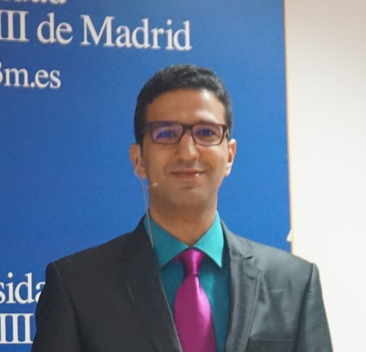
Aymen Fakhreddine, Institute of Networked and Embedded Systems, University of Klagenfurt, Klagenfurt, Austria, aymen.fakhreddine@aau.at Aymen Fakhreddine holds a doctoral and master degree in telematic engineering from the University Carlos III of Madrid (Spain) with expertise in wireless communications, networking, and localization. He is a senior researcher at the University of Klagenfurt working on cellular-connected drone systems. Before joining Bettstetter’s team, he was a researcher at IMDEA Networks and a visiting student at the Singapore University of Technology and Design. He also holds a master degree in advanced wireless communication systems from École Supérieure d’Électricité (CentraleSupélec) in Paris (France) and an engineering degree in Telecommunications from INPT Rabat (Morocco).
Dr. Christian Bettstetter, University of Klagenfurt, Austria
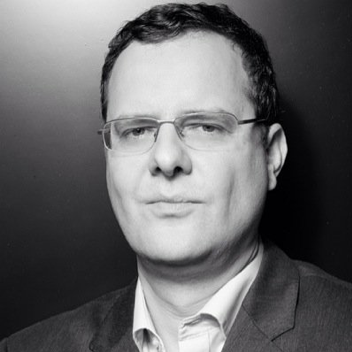
Christian Bettstetter, Institute of Networked and Embedded Systems, University of Klagenfurt, Klagenfurt, Austria, christian.bettstetter@aau.at Christian Bettstetter is professor for mobile systems at the University of Klagenfurt (Austria). He leads the Institute of Networked and Embedded Systems and is also the founding scientific director of Lakeside Labs. He has 20 years of experience in academic and industrial research and leadership. His work in wireless communications and self-organization in networked systems resulted in 140 scientific publications. Bettstetter holds master level and doctoral degrees in electrical and information engineering from TU München (Germany).
Panelists
Mr. Emini Driton, T-Mobile Austria GmbH, Austria
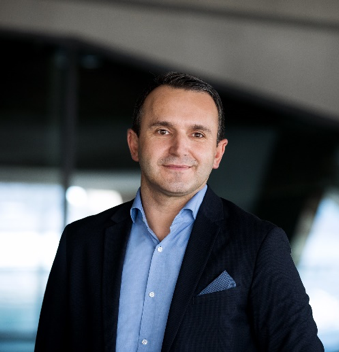
Driton Emini, Vice President, Technology/ Next Generation Networks & IoT, T-Mobile Austria GmbH, Vienna, Austria, driton.emini@t-mobile.at Dipl.- Ing. Driton Emini (M.Sc.) was born on 17th July 1975 in Gjilan / Kosovo where he finished the elementary school. Beginning of 1992 Driton migrated to Germany and after learning the German language he finished the Gymnasium at the Robert Koch Gymnasium in Berlin. Driton received his Master Degree (Dipl.-Ing.) in Telecommunication from the Technical University of Berlin. For his Master Thesis he was awarded with the Siemens Excellence Award. Driton started his carrier in Teleca Nürnberg/Germany as Verification Engineer and was involved in different projects working in different countries. In 2009 he moved to T-Mobile Austria where he was working as Program Manager until 2012. In 2012 he became Senior Manager within Radio Networks department and one year later he was promoted to Vice President Radio Networks. Since August 2018 Driton is leading the Next Generation Networks IoT. In his role he is focused on introducing new technologies, cooperating with start-ups partner as well as with universities. Within Deutsche Telekom Group he is representing T-Mobile Austria and contributing to several steering boards with the focus on innovation topics. Driton is married and father of two daughters.
Dr. Evşen Yanmaz, Özyeğin University, Turkey
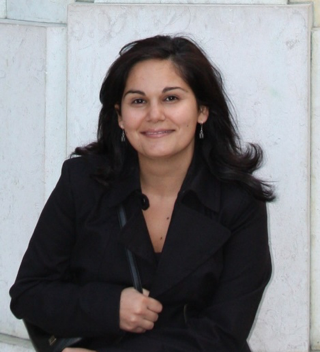
Evsen Yanmaz, Department of Electrical and Electronics Engineering, Özyegin University, Istanbul, Turkey, evsen.yanmaz@ozyegin.edu.tr Evsen Yanmaz received the B.S. degree in electrical and electronics engineering from Bogazici University in 2000; the M.S. degree in electrical engineering from SUNY at Buffalo in 2002; and the Ph. D. degree in electrical and computer engineering at Carnegie Mellon University in 2005. Before joining Özyegin University, she held positions as Senior Researcher and Project Leader at Lakeside Labs, Klagenfurt, as Senior Researcher at NES Institute at University of Klagenfurt, as postdoctoral researcher at the Los Alamos National Laboratory and as researcher at Carnegie Mellon University. Dr. Yanmaz is a member of IEEE. Her research interests include self-organizing networks, cooperative networks, coordination of airborne and ground sensor networks, and design and analysis of multi-UAV systems.
Dr. Jeroen Wigard, Nokia Bell Labs, Denmark
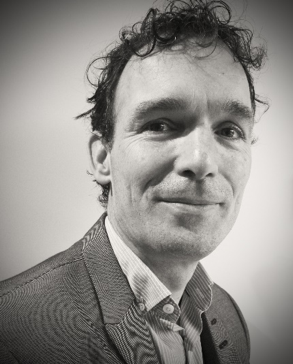
Jeroen Wigard, Nokia Bell Labs, Aalborg, Denmark, jeroen.wigard@nokiabell- labs.com. JEROEN WIGARD received the M.Sc. degree electrical engineering from Technische Universiteit Delft, Netherlands, in 1995 and the Ph.D. degree on the topic of handover algorithms and frequency planning in frequency hopping GSM networks from Aalborg University, Denmark, in 1999. He joined Nokia Aalborg, Denmark, where he was on radio resource management related topics for 2G, 3G, 4G, and 5G. He also has been studying several network deployment aspects related to LTE network evolution. He is currently with the Nokia Denmark Bell Labs, Aalborg (former Nokia Networks Aalborg) and involved in studies and 5G standardization related to UAVs, V2X and Non Terrestrial Networks (NTN). He is currently technical project lead of the European DroC2om project, focusing on drone critical communications, which is part of the SESAR program. He has authored and co-authored over 60 journal
Dr. Ursula Challita, Ericsson, Sweden
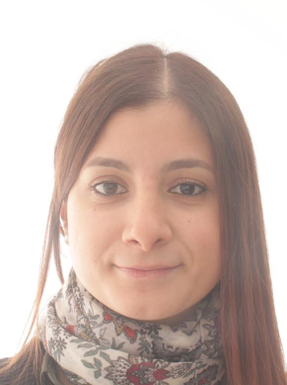
Ursula Challita, Ericsson(PRiMO-5G), Stockholm, Sweden, ursula.challita@ericsson.com Ursula Challita received her PhD degree from The University of Edinburgh in 2018. From 2016-2018, she was a visiting research scholar at Virginia Tech, USA. Currently, she is an Experienced Researcher at Ericsson Research, Stockholm, Sweden working on artificial intelligence for next-generation cellular network. Her research interests include wireless networks, unmanned aerial vehicles, spectrum management, machine learning, and optimization theory. Dr. Challita is the recipient of the Edinburgh Global Research Scholarship and Principal’s Career Development Scholarship for the years 2014-2017 and the HiPEAC collaboration grant for the year 2016.
Panel#5 - Maturing E2E network and cloud slicing: Where are the frontiers?
Abstract
This panel discusses the key challenges for efficient deploying network softwarization and e2e network & cloud slicing technologies toward coming 5G launch in 2020 and beyond. The panel invites distinguished experts on deeply programmable networking, wireless and mobile network softwarization, and open software platform suites for Access, Radio Access, Core, Edge Networks & Clouds. After communicating advances in state-of-the-art technology and standardization activities, the panel interactively would examine a set of thought-provoking questions with the participants.
Network slicing (NS) is an approach of flexible isolation and allocation of network resources and network functions for a network instance, providing a high level of customization and quality service guarantee. NS transforms the networking perspective by abstracting, isolating, orchestrating, softwarizing, and separating logical network components from the underlying physical network supporting the introduction of new network architectures and new approaches to service delivery and provider-tenant business models.
In general, a particular network slice consists of a union of subsets of (connectivity, storage, computing) resources & (Virtual) Network Functions & Service functions Functions [RFC7665] at the data & control & management planes at a given time that are managed together to provide a logical networking infrastructure in support of a variety of services.
Network slicing enables at a given time the dynamic creation of multiple, parallel sub-networks of different features by flexible isolation of allocated to a slice network resources and network functions and providing high levels of customization and quality guarantees. Network operators can use NS to enable different services to receive different treatment and to allow the allocation and release of network resources according to the context and contention policy of the operators. Such an approach using NS would allow a significant reduction of the operations expenditures.
The panel would like to discuss not only research and development aspects but also the perspectives of standardization, stakeholder eco-systems and benefits, social acceptance, and application/service viewpoints in order to attract the attention from the conference participants.
Panelist bios
Organizers
Prof. Alex Galis, University College London (UCL), UK
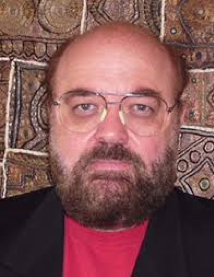
Alex Galis is a Professorial Research Fellow in Networked and Service Systems at University College London (UCL). His current interests are on 5G networking, software defined infrastructure and services, network and cloud programmability and management. He has co-authored more than 280 publications in the future Internet areas: networks and services, management, networking clouds, 5G virtualisation and programmability including 10 research books. He has contributed to 9 ITU-T standards on Future Networks and 5G Networks and he has worked on 16 IETF drafts (work in progress) in Autonomic networking and network slicing. He has been a co-principal investigator at UCL on a number of EU research projects with a total UCL budget of more than 10 M£, including overall technical leadership of the MISA - Management of IP networks (250 PY), FAIN - programmable networks (300PY), CONTEXT - context aware networking (75PY), AUTONOMIC INTERNET - autonomic network (75PY) and NECOS - Novel Enablers for Cloud Slicing (75PY) projects. He was a member of the Steering Group of the Future Internet Assembly (FIA) and he led the Management and Service–aware Networking Architecture (MANA) working group at FIA. He acted as PTC/ keynotes/ panels/ workshops co-chair of 14 IEEE conferences including TPC co-chair of 1st IEEE Network Softwarization 2015 (NetSoft 2015, hosted by UCL in London) and reviewer in more than 100 IEEE conferences and journals. He is a co-editor of IEEE JSAC series on Network Softwarisation and Enablers, ETRI Journal published by Wiley and of the IEEE Communications Magazine feature topic on Advances In Networking Software. He is an International Academy, Research, and Industry Association (IARIA) Fellow (2011, https://www.iaria.org/fellows.html). He was selected as a Vice Chair of the ITU-T SG13 Group on Future Networking. He is involved in IETF and ITU-T SG13 network slicing activities and he is also involved in IEEE SDN initiative including co-chairing of the IEEE SDN publication committee.
Dr. Christian Esteve Rothenberg, Rothenberg, University of Campinas, Brazil
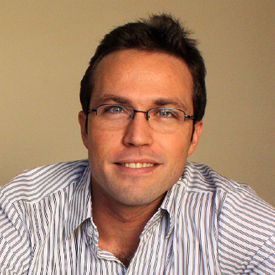
Christian Rothenberg is Assistant Professor (tenure-track) and head of the Information & Networking Technologies Research & Innovation Group (INTRIG) at University of Campinas (UNICAMP), where he received his Ph.D. in Electrical and Computer Engineering in 2010. From 2010 to 2013, he worked as Senior Research Scientist in the areas of IP systems and networking, leading SDN research at CPqD R&D Center in Telecommunications, Campinas, Brazil. He holds the Telecommunication Engineering degree from the Technical University of Madrid (ETSIT – UPM), Spain, and the M.Sc. (Dipl. Ing.) degree in Electrical Engineering and Information Technology from the Darmstadt University of Technology (TUD), Germany, 2006. During his master thesis at Deutsche Telekom he worked on fixed mobile convergence and R&D activities on converged access networks (ScaleNet) and self-optimizing radio access networks. Christian has two international patents and over 100 publications, including scientific journals and top-tier networking conferences such as SIGCOMM and INFOCOM, altogether featuring 4000+ citations. He was an Open Networking Foundation (ONF) Research Associate (2013-2017), co-chair of the IEEE SDN Outreach Committee initiative (2016-2017), is a member of the CPqD Innovation Committee (2017-), and CNPq Productivity Research Fellow (2017-2020).
Joan Serrat, Universitat Politècnica de Catalunya, Barcelona, Spain
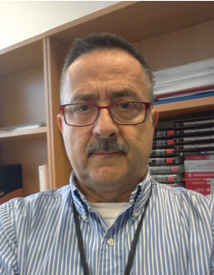
Joan Serrat is Full Professor at the Faculty of Telecommunications Engineering, a centre of Universitat Politècnica de Catalunya in Barcelona. In 1995, he started a research group in network management being involved in several projects in the field of the Telecommunication Management Network –TMN-; the ACTS MEPHISTO and the ACTS MISA of which he leads the UPC team. Subsequently, he also led the participation of UPC in the IST FAIN, the IST WINMAN and the IST CONTEXT, three EU projects dealing with management of Active Networks, IP/WDM and context aware services respectively. More recently he has participated in the CELTIC Madeira project, the TSI2005-06413 Spanish Ministry of Innovation funded project, the IST EMANICS NoE, the AUTOI project, the gSLM project, the Flamingo NoE and the FedSM project in the 7th FP of the EU, all dealing with new network and service management paradigms. Prof. Serrat is author or coauthor of 6 books and by 150 contributions to technical and scientific fora and magazines. Currently, he is the contact point of the Telemanagement Forum at UPC.
Moderator
Dr. Javier Baliosian, Universitat Politècnica de Catalunya, Barcelona, Spain
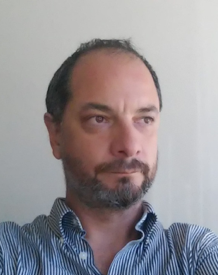
Javier Baliosian received the degree of Computer Engineer from the University of the Republic (Uruguay) in 1998, and his PhD from the Polytechnic University of Catalonia (Spain) in 2005. Since then has been involved in several research projects with different groups such as the Computer Laboratory of the University of Cambridge, the Laboratory of Communication Networks at KTH in Sweden and the Ericsson Ireland Research Centre where he worked as a researcher and project coordinator. Lately, he has spent a year in the Department of Network Software, TELECOM & Management SudParis and he is currently working as Distinguished Researcher at UPC BarcelonaTech (Spain), and as Aggregate Professor of the Department of Computer Science at the University of the Republic (Uruguay). His areas of interest are Computer Networks, Self-managed networks, Network Softwarization, Cloud Computing, Algorithms, Control of Discrete Event Systems, and Machine Learning.
Prof. Mohamed Faten Zhani, ÉTS Montreal, Canada
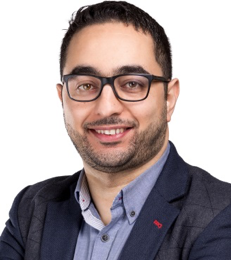
Mohamed Faten Zhani is an associate professor with the department of software and IT engineering at l’École de Technologie Supérieure (ÉTS Montreal) in Canada. His research interests include cloud computing, network function virtualization, software-defined networking and resource management in large-scale distributed systems. Faten has co authored several book chapters and research papers published in renowned conferences and journals including IEEE/IFIP/ACM CNSM, IEEE/IFIP IM/NOMS, IEEE INFOCOM, IEEE transactions on cloud computing and IEEE Journal on Selected Areas in Communications (JSAC). He served as the general or technical program chair of several international workshops and conferences. He is also co-editor of the IEEE Communications Magazine series on "Telecom Software, Network Virtualization, and Software Defined Networks", associate editor of Wiley international journal of network management, and deputy managing editor of the IEEE softwarization newsletter. He is co founder and vice-chair of the IEEE Network Intelligence Emerging Technology Initiative and a cluster lead at the IEEE P1916.1 SDN/NFV Performance standard group. Faten recently received the IEEE/IFIP IM 2017 Young Researchers and Professionals Award as a recognition for outstanding research contribution and leadership in the field of network and service management. More details are available on his web page
Mrs. Kiran Makhijani, Future Networks, Huawei, USA
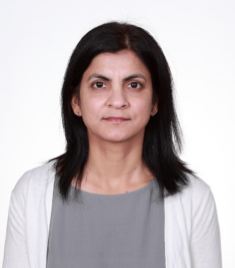
Kiran Makhijani is Principal Research Scientist at Future Networks, Huawei USA. Her current work involves exploration of the new internet architecture, technologies and protocols. In this regard, she has contributed to establishment of ETSI NGP and more recently ITU-T FG-NET-2030. Currently, Kiran is responsible for formalizing requirements, definitions and performance metrics for new communication services under network 2030 initiative. In particular understanding a variety of challenges with the time-centric behavior of applications in automation, autonomous systems and holographic media domains. In the context of network slicing, her focus is on realization of the technology in IP-based networks and is a strong proponent of standardization and normalized definition of network slices. Kiran joined an effort at IETF to establish such a group and later went on to contribute to an integrated architecture of network slicing at ETSI NGP. She continues to explore network slicing models and protocols for time-centric communication services. Prior to joining Huawei, Ms Makhijani worked with Cisco and has led a broad array of industry projects in the forwarding and routing systems, designing high-scale routing platform, policy based routing and cloud-scale network architectures.
Dr. Faqir Zarrar Yousaf, NEC Laboratories Europe, Germany
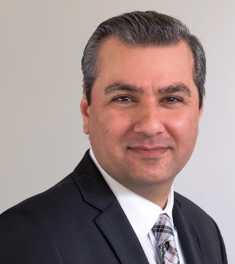
Dr. Faqir Zarrar Yousaf is a seasoned telecom researcher with extensive expertise in conducting in-depth state-of-art R&D for broadband telecommunication networks in general and Evolved Packet Core (EPC) networks in particular. Current research focus is on adopting SDN/NFV related technology for the 5G mobile core networks. Actively involved in ETSI NFV standardization activities with Rapporteurship of 4 workitems. Received NEC’s standardization “Fresh Player” award 2015 for my excellent contributions to the ETSI NFV IFA WG activities. Technical contributor to 10+ published ETSI NFV standard documents with over 150 contributions. Author of book chapters and research papers published in international peer-reviewed journals and flag-ship conferences. Filed 13 patents in fields of NFV, SDN, EPC, CDN. Proficient in the design and development of large scale, high-fidelity simulation models in OMNeT++ and NS3. Extensive experience in the design, development and testing (e.g., SIT/SQA) of novel protocols, algorithms and system methods for optimizing network performance. Experience in test-bed development in Linux and OpenStack environments. Served as a TPC member and session chair for various conferences and invited as Keynote speaker and expert panels in to conferences, workshops, universities and telecommunication bodies. Also experienced in collaborative projects under the EU FP7 framework and EU Horizon2020 projects
Panel#6 - Paving The Way Towards 6G.
Abstract
Mobile communication systems have known a revolutionary progress in the last 40 years. From the first generation in the 1980s to the fifth Generation (5G), there was roughly a new generation every decade. After few years of extensive research, 5G is being standardized by 3GPP. It is expected that the standards will be approved by ITU around 2020 timeframe. Initial commercial deployments are expected to start around the same time frame since different stake holders are already working to launch 5G networks. In order to stay ahead of the game, researchers and industrials are starting to think about the evolution of wireless networks beyond-5G. The time frame for these standards will be around 2030-2035. The goal of this panel is to discuss the emerging technologies that will be the focus of wireless networks beyond 5G. In this panel, we will review the lessons learnt from the research and standardization phases of the 5G technology. We will also discuss the future evolution of wireless standards towards 6G and the different technologies that will be developed. 6G is expected to encompass technologies that will enable fully autonomous and self-driving cars, robotics, drones delivery services. It is also expected that 6G will also integrate terrestrial wireless and satellite systems for a global network coverage. Applications of Aritificial Intelligence (AI) are also in an exponential trend and will find applications in wireless communications, such as self-organized networks. All these items will be discussed by a panel of experts from both academia and industry. This panel discussion falls at the end of the 5G standardization process and as the research and standard communities are preparing the next steps and will help draw lessons from the 5G standardization process and prepare the next phase.
Panel Discussion Points::
- What lessons can we learn from the 5G research and standardization processes?
- How do you see the regional race to adopt the 5G (Europe, Asia, USA) and do you think that the same pattern will repeat in 6G? Will 5G/6G have a similar pattern as 3G/4G, i.e. the even generation 4G/6G is more commercially succesful than its old generation predecessor?
- What time frame will 6G follow? Do you think we will still observe the 10 years cycle or do you think that 5G will be a successful system with probably a longer cycle?
- What are the main breakthrough technologies that will emerge from 6G?
- What are the challenges that you see for the 6G evolution (technical, political and regulatory, etc)?
- Do you think that the broadcast-broadband convergence will finally happen? Will cellular network support TV broadcast and completely replace terrestrial networks for linear TV?
- Wireless charging/powering over a distance of multiple meters (rather than centimeters), will it be a key 6G technology?
- AI can be used to enhance communications, e.g. via self organization network. What are the main physical layer technologies that can benefit from artificial intelligence?
Panel Session Format:
The Panel will consist in a separate 5-10 min presentation by each of the panelist on the three major advances they think will make the most important part of 6G standards. The moderator will then ask question related to the 5G lessons and 6G expectations. For 30 minutes. The last 10 minutes will be open for public questions.
Panelist bios
Organizers
Dr. Belkacem Mouhouche
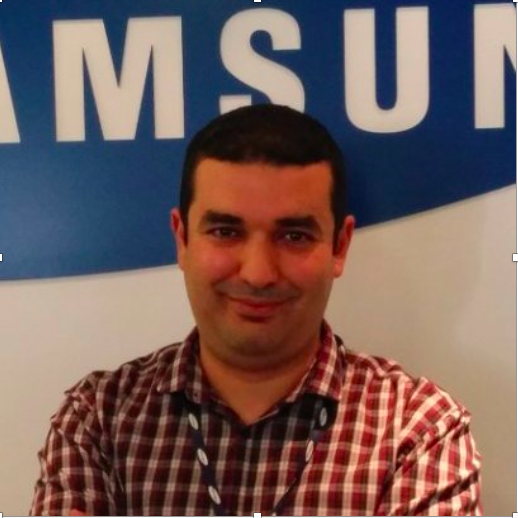
Dr. Belkacem Mouhouche is a Chief Standards Engineer at Samsung Research UK. He holds a Ph.D. degree in Signal Processing from Ecole Nationale Superieure des Telecoms (Telecom Paristech) in France. During his Ph.D. he worked on 3GPP third generation systems (UMTS). He later worked as a 3GPP standard Engineer following the development of HSDPA and LTE systems. He was also involved in FP7 European Project "End to End Efficiency" (E3) where he worked on cognitive radio in heterogeneous systems. His research interest are in the area of advanced techniques for the physical layer of future communication systems including MIMO, beamforming and coding applied to wireless systems. Dr. Mouhouche was also heavily involved in the development of the latest broadcast terrestrial standard ATSC3.0 and led the broadcast activity within the 5G-PPP project "Fantastic-5G". Recently, he was appointed as the technical manager of 5G-PPP project "5G-Xcast" focused on new point to multipoint techniques for 5G networks.
Dr. Pengfei Xia
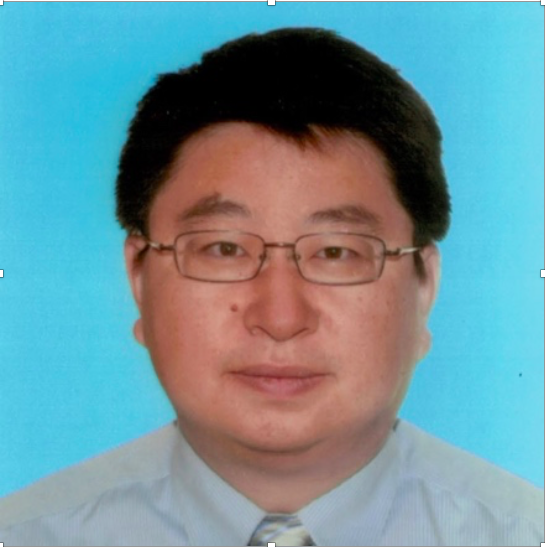
Dr. Pengfei Xia is currently Director and Principal Engineer at Huawei Device USA, San Diego, CA, USA. He holds a Ph.D. degree in Electrical and Computer Engineering from University of Minnesota, Minneapolis. He has co-authored over 70 international journal and conference papers, more than 130 international patents (granted and pending), and numerous contributions to 3GPP 4G LTE, 5G NR, IEEE 802.11, IEEE 802.15 international standards. He is a co-author of a book on millimeter wave wireless communications in 2010. His current research interests lie in the area of millimeter wave wireless communications and computing, vehicular communications and computing, B5G/6G communications and networking. He is an Associate Editor for IEEE Communications Magazine and IEEE Transactions on Signal Processing. He has received the IEEE Signal Processing Society Best Paper Award 2011.
Panelists
Merouane Debbah, Huawei
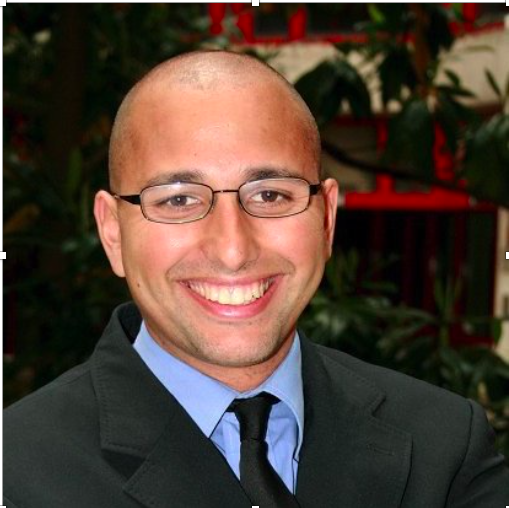
Mérouane Debbah received the M.Sc and Ph.D. degrees respectively from the Ecole Normale Supérieure, France. He worked for Motorola Labs (Saclay, France) from 1999-2002 and the Vienna Research Center for Telecommunications (Vienna, Austria) until 2003. From 2003 to 2007, he joined the Mobile Communications department of the Institut Eurecom (Sophia Antipolis, France) as an Assistant Professor. From 2007 to 2014, he was the director of the Alcatel-Lucent Chair on Flexible Radio. Since 2014, he is Vice-President of the Huawei France R&D center and director of the Mathematical and Algorithmic Sciences Lab. His research interests lie in fundamental mathematics, algorithms, statistics, information & communication sciences research. He is an Associate Editor in Chief of the journal Random Matrix: Theory and Applications and was an associate and senior area editor for IEEE Transactions on Signal Processing respectively in 2011-2013 and 2013-2014. Merouane is the receipient of many awards including the IEEE Glavieux Prize Award.
Rahim Tafazolli, 5GIC, Surrey University.
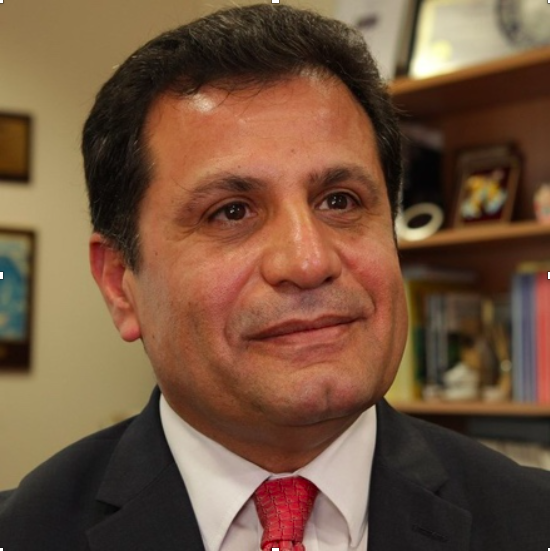
Rahim Tafazolli has been the Professor of Mobile and Satellite Communications at the University of Surrey since April 2000, Director of Institute of Communication Systems (ICS, formerly known as CCSR) since January 2010 and the Director of the 5G Innovation Centre since 2012. He has over 25 years of experience in digital communications research and teaching. He has authored and co-authored more than 500 research publications and is regularly invited to deliver keynote talks and distinguished lectures to international conferences and workshops. He has also edited two books: “Technologies for the Wireless Future”, Vol.1 ( 2004) and Vol.2 (2006) both published by Wiley's. And he is co-inventor on more than 30 granted patents, all in the field of digital communications.
Hamid Aghvami, King’s College
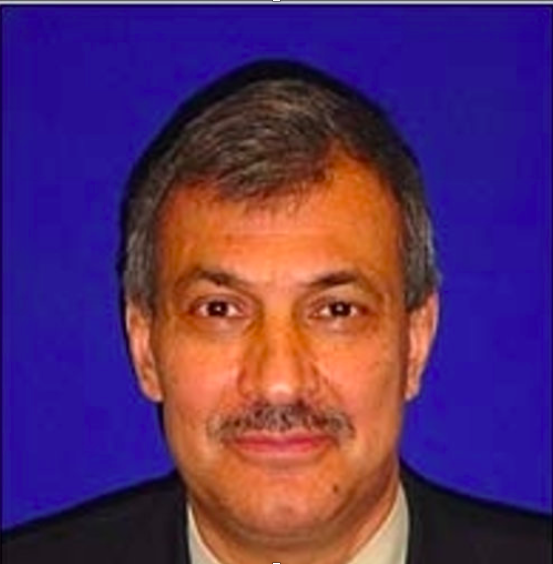
Hamid Aghvami joined the academic staff at King’s in 1984. In 1989 he was promoted to Reader, and in 1993 was promoted Professor in Telecommunications Engineering. He was the Director of the Centre for Telecommunications Research at King’s from 1994 to 2014. Professor Aghvami carries out consulting work on Digital Radio Communications Systems for British and International companies; he has published over 550 technical journal and conference papers, and given invited talks and courses the world over on various aspects of Personal and Mobile Radio Communications. He was Visiting Professor at NTT Radio Communication Systems Laboratories in 1990, Senior Research Fellow at BT Laboratories in 1998-1999, and was an Executive Advisor to Wireless Facilities Inc., USA, in 1996-2002. He is the Chairman of Advanced Wireless Technology Group Ltd. He is also the Managing Director of Wireless Multimedia Communications Ltd, his own consultancy company. Professor Aghvami is the founder of the International Symposium on Personal Indoor and Mobile Radio Communications (PIMRC), a major yearly conference attracting some 1,000 attendees. He is Fellow of the Royal Academy of Engineering, Fellow of the IET, Fellow of the IEEE.
Qingwen Liu, Tongji University
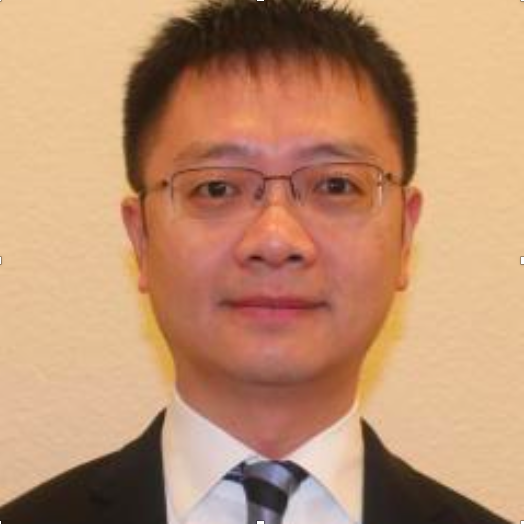
Qingwen Liu is currently Full Professor with the Department of Computer Science and Technology, Tongji University, Shanghai, China. He is a Senior Member of the IEEE. He received the Ph.D and M.S. degrees in Electrical Engineering from University of Minnesota - Twin Cities (UMN), and the B.S. degree in Electrical Engineering and Information Science from University of Science and Technology of China (USTC). His current research interests lie in the area of long-range wireless power transfer, mobile power networks, cross layer designs, and 5G/6G technologies. One of his research papers on cross-layer design in wireless communication networks has received over 1000 citations.
Oghenekome Oteri, Interdigital Communications
Oghenekome (Kome) Oteri is Principal Engineer at Interdigital Communications. He received a B.Sc. in Electrical Engineering from Obafemi Awolowo University, Ile-Ife and MS and Ph. D. degrees in Electrical Engineering from Stanford University in 1998 and 2005 respectively Since then, he has worked on multiple communications technologies including 802.11 WLANs, DSL, UMTS, HSPA, 802.16e/WiMAX, 3GPP LTE. His research interests are in the areas of digital communications, signal processing and wireless communications with a focus on techniques such as MIMO, beamforming, and Full Duplex communications and millimeter wave communications. He is currently working on applications of these technologies in both IEEE 802.11 and 3GPP NR and recently served as the secretary of the Full Duplex Technical Interest Group in the IEEE 802.11 Working Group. He is a co-inventor of over 20 granted patents, and has authored numerous external and internal technical papers.
Prof. Ari Pouttu, University of Oulu, Finland
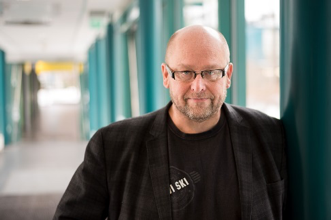
Prof. Ari Pouttu has scientific and engineering experience as a researcher, project manager and research manager in various domains of ICT development. The projects under his command have resulted in waveforms and system designs for military radio communication, radar systems, embedded device networks, future wireless radio communications including cellular systems, cognitive networks and navigation applications. He has published more than 60 conference or journal papers in the field of wireless communications and he holds two patents. He was the Director of Centre for Wireless Communications in the University of Oulu from 2006 to 2012. Currently he is heading as a professor a research group targeting dependable wireless solutions for business verticals such as energy, industry, health and automotive including solutions for 5G. He is the principal investigator of 5G test network (5GTN) experimental research, co-PI of H2020 Sat5G, 5GDrones, and 5G-ENHANCE projects and is acting as vice-director of the national 6Genesis flagship targeting 6G solutions.
Panel#7 - 5G Enabled Smart Industries
Abstract
During 2019 initial 5G network launches are taking place globally. Most aggressive service provides are in North America and Asia, followed by European countries. Initial launches based on 3GPP Rel.15 specifications are focusing on offering a major service improvement for personal services. Increased use, better quality and wider offering of various video-based services are pushing the current networks to their limits, and 5G is expected to solve that by offering unlimited broadband experience.
While initial standards and therefore network launches are focusing on offering mobile broadband and consumer services, 5G is expected to open a wide set of completely new business opportunities for practically all business sectors, or verticals. With increasing use of cloud-based services, virtualization, and architecture optimized for connected objects, ultra-reliable network, data processing at the network edge, low-latency communication, etc. are making wireless 5G connection truly an attractive communication alternative and promising base for wider digitalization and data-driven and automated decision making in various sectors. 5G translates many existing industry products to mobile devices unleashing huge potential enabled by increased mobility. Big value creation potential is estimated on various business sectors, and highest growth potential particularly for industry & factories until 2025 (low estimates 1210, high estimate 3700 $B) globally. Large enterprises operating in manufacturing, automation, utilities, transportation, etc. can be referred as ‘physical industries’ to make a difference from ‘digital industries’ consisting of technology, content, finance, insurance, etc. segment. These physical industries are said to occupy 70% of the industry workforce cost, and only 30% of the IT investments. Therefore, digitalization on industry segment with secure and robust wireless infrastructure has big value creation potential improving competitiveness. For an individual factory or a manufacturing facility mobile wireless solution introduces a broad range of automation and industrial use cases applicable both indoor and outside.
PANEL DISCUSSION POINTS:
- Feasibility of 1st phase 5G solution in an industry environment
- Adaptation of 5G URLLC introducing wireless industrial internet
- How to create an economically sustainable operational model and a solution for a tailored mobile network for an industry campus?
- Possibilities of re-using existing investment by transforming existing wired industry equipment to wireless by integrating 5G radios to existing industry machines.
- Adaption of existing wired industry processes to operate as unified system in fixed / wireless 5G architecture.
- Solutions for seamless interaction between humans and machines by integrating connectivity to the objects flowing through the logistical chain, utilizing the data, and learning for service creation.
- Using video and other similar technics for identifying goods, humans and vehicles and introducing services e.g. for maintenance, quality control, logistics, and security.
- Tele presence and remote control possibilities enabled by low-latency communication. Humans may be assisted, and machines can be controlled and assisted remotely
Panelist bios
Organizers
Prof. Ari Pouttu, University of Oulu, Finland

Prof. Ari Pouttu has scientific and engineering experience as a researcher, project manager and research manager in various domains of ICT development. The projects under his command have resulted in waveforms and system designs for military radio communication, radar systems, embedded device networks, future wireless radio communications including cellular systems, cognitive networks and navigation applications. He has published more than 60 conference or journal papers in the field of wireless communications and he holds two patents. He was the Director of Centre for Wireless Communications in the University of Oulu from 2006 to 2012. Currently he is heading as a professor a research group targeting dependable wireless solutions for business verticals such as energy, industry, health and automotive including solutions for 5G. He is the principal investigator of 5G test network (5GTN) experimental research, co-PI of H2020 Sat5G, 5GDrones, and 5G-ENHANCE projects and is acting as vice-director of the national 6Genesis flagship targeting 6G solutions.
Panelists
Mr. Olli Liinamaa, Nokia, Finland
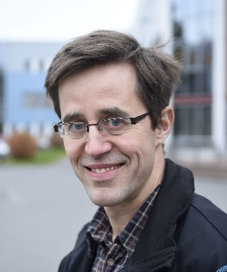
Dr. Andreas Müller, Robert Bosch GmbH, Germany
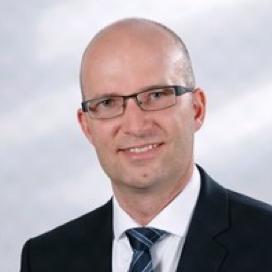
Prof Gerhard Fettweis, Technical University of Dresden, Germany
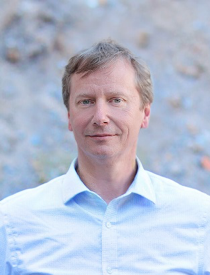
Prof. Mehdi Bennis, University of Oulu, Finland
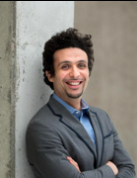
Dr. Krister Landernäs, ABB Corporate Research, Sweden
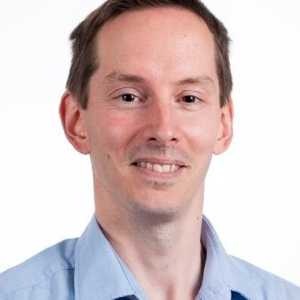
Panel#8 - Toward Millimeter-wave V2X for Automated Driving in 5G and Beyond.
Abstract
Vehicles are becoming more intelligent and automated. To achieve higher automation levels, vehicles are being equipped with more and more sensors. High data rate connectivity seems critical to allow vehicles exchanging all these sensors data to enlarge their sensing range and to improve safety related decisions. This panel explores the use of millimeter wave communication for automated driving, enabled by 5G vehicle-to-everything (V2X) communication. The panel will consider a variety of topics, for example the role of V2X in automated driving. This is especially relevant given the significant developments in fully autonomous (and not connected) vehicles, in parallel with the efforts on dedicated short-range communications (low data rate for low levels of automation). The panel will also consider the requirements for V2X to meet different applications including safety message, exchange of raw and processed sensor data, and platooning among others. The specific needs for low latency, ultra-reliability and high data rates will be discussed for each application. The panel will also discuss their vision for how 5G must evolve to serve the V2X applications. This panel is organized by 5G-MiEdge project funded by both Horizon 2020 project of EC in Europe and SCOPE project of MIC in Japan.
Panelist bios
Organizers
Kei Sakaguchi, Professor, Tokyo Institute of Technology, Japan
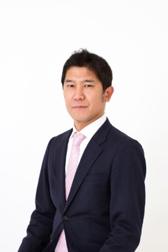
Kei Sakaguchi received the Ph.D degree in Electrical & Electronics Engineering from Tokyo Institute Technology in 2006. Currently, he is a Professor at Tokyo Institute of Technology in Japan and at the same time he is working at Fraunhofer HHI in Germany as a Scientific Consultant. He received the Outstanding Paper Awards from SDR Forum and IEICE in 2004 and 2005 respectively, and three Best Paper Awards from IEICE communication society in 2012, 2013, and 2015. He also received the Tutorial Paper Award from IEICE communication society in 2006. He served as a General co-chair in the IEEE WDN-5G in 2018 and an Industrial Panel co-chair in the IEEE Globecom in 2017. His current research interests are in 5G cellular networks, millimeter-wave communications, and wireless energy transmission. He is a member of IEEE and IEICE.
Robert Heath Jr, Cullen Trust for Higher Education Endowed Professor, The University of Texas at Austin, USA
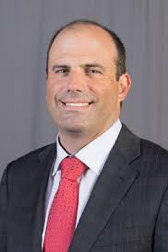
Robert W. Heath Jr. is a Cullen Trust for Higher Education Endowed Professor in the Department of ECE at The University of Texas at Austin, and Director of UT SAVES. He authored "Introduction to Wireless Digital Communication” (Prentice Hall in 2017) and "Digital Wireless Communication: Physical Layer Exploration Lab Using the NI USRP” (National Technology and Science Press in 2012). He co-authored “Millimeter Wave Wireless Communications” (Prentice Hall in 2014). His research has been recognized with a number of awards including the 2016 IEEE Communications Society Fred W. Ellersick Prize, the 2016 IEEE Communications Society and Information Theory Society Joint Paper Award, and 2017 IEEE Marconi Prize Paper Award. He is a licensed Amateur Radio Operator, a registered Professional Engineer in Texas, a Private Pilot, recipient of the 2017 EURASIP Technical Achievement Award, is a member of EURASIP and IEICE, is a Fellow of the IEEE, and a Fellow of the National Academy of Inventors. Heath brings expertise in millimetre wave for V2X communications to the panel organization. He has published more than 70 papers on millimetre wave, including one general textbook and one monograph on its applications to V2X. He has studied a variety of problems including the motivation for millimetre wave in V2X, strategies for efficient beam training, performance analysis of realistic deployments, and combined sensing and communications. In addition, he has relevant funded research from Honda, Toyota, the Texas Department of Transportation, and the Federal Department of Transportation.
Moderator
Thomas Haustein, Department Head, Fraunhofer HHI
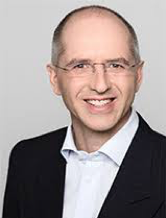
Thomas Haustein received the Dr.-Ing. (Ph.D.) degree in mobile communications from the University of Technology Berlin, Germany, in 2006. In 1997, he was with the Fraunhofer Institute for Telecommunications, Heinrich Hertz Institute (HHI), Berlin, where he worked on wireless infrared systems and radio communications with multiple antennas and OFDM. He focused on real-time algorithms for baseband processing and advanced multiuser resource allocation. From 2006 till 2008, he was with Nokia Siemens Networks, where he conducted research for 4G. Since 2009 he is heading the Wireless Communications Department at Fraunhofer HHI focussing on 5G and Industrial Wireless and related standardization. He was coordinating the Europe/Japan project MiWEBA and is currently coordinating the European team of the H2020 Europe/Japan project 5G-MiEdge.
Panelists
Satoshi Nagata, 3GPP RAN Vice Chair, NTT docomo
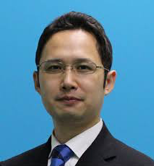
Satoshi Nagata received his B.E. and M.E. degrees from Tokyo Institute of Technology, Tokyo, Japan, in 2001 and 2003, respectively. In 2003, he joined NTT DOCOMO, INC. He worked for the research and development for wireless access technologies for LTE, LTE-Advanced, and 5G. He is currently a senior research engineer working for 5G and 3GPP standardization. He had contributed to 3GPP over ten years, and contributed 3GPP TSG-RAN WG1 as a vice chairman from November 2011 to August 2013, and as a chairman from August 2013 to August 2017. He is currently a vice chairman of 3GPP TSG-RAN since March 2017. He was a recipient of the 2003 active research award in radio communication systems from IEICE in 2003..
Chih-Lin I,, Chief Scientist, China Mobile
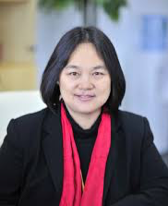
Chih-Lin I received her Ph.D. degree in electrical engineering from Stanford University. She has been working at multiple world-class companies and research institutes leading the R&D, including AT&T Bell Labs; Director of AT&T HQ, Director of ITRI Taiwan, and VPGD of ASTRI Hong Kong. She received the IEEE Trans. COM Stephen Rice Best Paper Award, is a winner of the CCCP National 1000 Talent Program, and has won the 2015 Industrial Innovation Award of IEEE Communication Society for Leadership and Innovation in Next-Generation Cellular Wireless Networks. In 2011, she joined China Mobile as its Chief Scientist of wireless technologies, established the Green Communications Research Center, and launched the 5G Key Technologies R&D. She is spearheading major initiatives including 5G, C-RAN, high energy efficiency system architectures, technologies and devices; and green energy. She was an elected Board Member of IEEE ComSoc, Chair of the ComSoc Meetings and Conferences Board, and Founding Chair of the IEEE WCNC Steering Committee. She is currently an Executive Board Member of GreenTouch, a Network Operator Council Member of ETSI NFV, a Steering Board Member of WWRF, and a Scientific Advisory Board Member of Singapore NRF. Her current research interests center around “Green, Soft, and Open”.
Ali Sadri, Sr. Director, Intel, USA
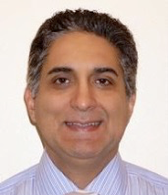
Ali Sadri is Sr. Director of mmWave Standards and Advanced Technologies at Intel Corporation. Ali has over 25 years of engineering, scientific and academic background in Wireless Communications system. His Professional work started at IBM in conjunction with serving as a Visiting Professor at the Duke University. In 2002 Ali joined Intel Corporation where he initiated and lead the standardization of the next generation High Throughput WLAN at Intel that became the IEEE 802.11n standards. Later Dr. Sadri founded and served as the CEO of the WiGig Alliance in 2008 to create the ground breaking WiGig 60 GHz technology and the 802.11ad standards. Currently Dr. Sadri is leading the mmWave advanced technology development at Intel. His expertise expands to the next generation WiGig standards mmWave for Backhaul, Fronthaul and distribution network to scale mmWave deployment in 5G systems. Ali holds over 100 Issued patents in wired and wireless communications systems.
Koji Takinami, Manager, Panasonic
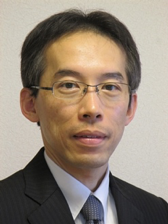
Koji Takinami received the B.S. and M.S. degrees in electrical engineering from Kyoto University, Kyoto, Japan, in 1995 and 1997, respectively, and the Ph.D. degree in physical electronics from Tokyo Institute of Technology, Tokyo, Japan, in 2013. In 1997, he joined Matsushita Electric Industrial (Panasonic) Co., Ltd., Osaka, Japan. Since then he has been engaged in the design of analog and RF circuits for wireless communications. From 2004 to 2006, he was a visiting scholar at the University of California, Los Angeles (UCLA), where he was involved in the architecture and circuit design of the high efficiency CMOS power amplifier. In 2006, he joined Panasonic Silicon Valley Lab, Cupertino, CA, where he worked on high efficiency transmitters and low phase-noise digital PLLs. In 2010, he relocated to Japan and currently leads millimeter-wave V2X system development.




